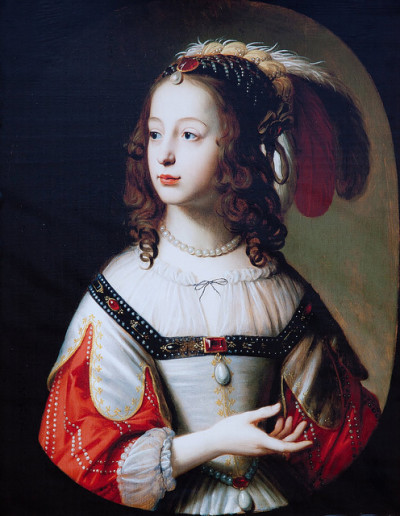Sophia of Hanover (Sophia of the Palatinate )

Before her marriage, Sophia, as the daughter of Frederick V, Elector Palatine of the Rhine, was referred to as Sophie, Princess Palatine of the Rhine, or as Sophia of the Palatinate. The Electors of the Palatinate were the Calvinist senior branch of House of Wittelsbach, whose Catholic branch ruled the Electorate of Bavaria. On 30 September 1658, she married Ernest Augustus, Elector of Brunswick-Lüneburg, at Heidelberg, who in 1692 became the first Elector of Hanover. Ernst August was a second cousin of Sophia’s mother Elizabeth Stuart, as they were both great-grandchildren of Christian III of Denmark. Sophia became a friend and admirer of Gottfried Leibniz while he was librarian at the Court of Hanover. Their friendship lasted from 1676 until her death in 1714. This friendship resulted in a substantial correspondence, first published in the nineteenth century (Klopp 1973), that reveals Sophia to have been a woman of exceptional intellectual ability and curiosity. She was well-read in the works of René Descartes and Baruch Spinoza. Together with Ernst Augustus, she greatly improved the Summer Palace of Herrenhausen and she was the guiding spirit in the creation of the gardens (which still exist) surrounding the palace, where she died. Sophia was absent for almost a year, 1664–5, during a long holiday with Ernest Augustus in Italy, but she corresponded regularly with her sons’ governess and took a great interest in her sons’ upbringing, even more so on her return. After Sophia’s tour, she bore Ernest Augustus another four sons and a daughter. In her letters, Sophia describes her eldest son as a responsible, conscientious child who set an example to his younger brothers and sisters. Sophia was, at first, against the marriage of her son and Sophia Dorothea of Celle, looking down on Sophia Dorothea’s mother (who was not of Royal birth) and concerned by Sophia Dorothea’s legitimated status, but was eventually won over by the advantages inherent in the marriage.
In September 1700, Sophia met her cousin, King William III of England and II of Scotland, at Loo. Just two months before their meeting, Prince William, Duke of Gloucester, King William III’s nephew and son of the future Queen Anne, died. Given the ailing William III’s reluctance to remarry, the inclusion of Sophia in the line of succession was becoming more likely. A year later, the Parliament of England passed the Act of Settlement 1701 declaring that, in the default of legitimate issue from Anne or William III, the crowns were to settle upon “the most excellent princess Sophia, electress and duchess-dowager of Hanover” and “the heirs of her body, being Protestant”. Sophia was made heiress presumptive for the purpose of cutting off any claim by the Roman Catholic James Francis Edward Stuart, who would otherwise have become James III & VIII, as well as denying the throne to many other Roman Catholics and spouses of Roman Catholics who held a claim. The act restricts the British throne to the “Protestant heirs” of Sophia of Hanover who have never been Roman Catholic and who have never married a Roman Catholic. Some British politicians attempted several times to bring Sophia to England in order to enable her to immediately assume the government in the event of Anne’s death. It was also argued that such a course was necessary to ensure Sophia’s succession, for Anne’s Roman Catholic half-brother was significantly closer to London than Sophia. The electress was eager to move to London, but the proposal was denied, as such action would mortally offend Anne who was strongly opposed to a rival court in her kingdom. Anne might have been aware that Sophia, who was active and lively despite her old age, could cut a better figure than herself. Sophia was completely uncertain of what would happen after Anne’s death, saying: “What Parliament does one day, it undoes the next.”
When the law was passed in mid-1701, Sophia (age 70), five of her children (ages 35 to 41), and three legitimate grandchildren (ages 14 to 18) were alive. Although Sophia was in her seventy-first year, older than Anne by thirty-five years, she was very fit and healthy, and invested time and energy in securing the succession either for herself or her son. Currently, there are more than 5,000 legitimate descendants of Sophia, although not all are in the line of succession. The Sophia Naturalization Act 1705 granted the right of British nationality to Sophia’s non-Roman Catholic descendants; those who had obtained the right to British citizenship via this Act at any time before its repeal by the British Nationality Act 1948 retain this lawful right today.
Although considerably older than Queen Anne, Sophia enjoyed much better health. According to the Countess of Bückeburg in a letter to Sophia’s niece, the Raugravine Luise, on the 5th of June 1714 Sophia felt ill after receiving an angry letter from Queen Anne. Two days later she was walking in the gardens of Herrenhausen when she ran to shelter from a sudden downpour of rain and collapsed and died, aged 83—a very advanced age for the era. Just over a month later, in August, Queen Anne died at the age of 49. Had Anne died before June 1714, Sophia would have been the oldest person to ascend the British throne. Upon Sophia’s death, her eldest son Elector George Louis of Brunswick-Lüneburg (1660–1727) became heir presumptive in her place, and weeks later, succeeded Anne as George I. Sophia’s daughter Sophia Charlotte of Hanover (1668–1705) married Frederick I of Prussia, from whom the later Prussian kings descend.
Born
- October, 14, 1630
- The Hague, Netherlands
Died
- June, 08, 1714
- Germany
- Herrenhausen, Hanover
Cemetery
- Leine Castle
- Hanover, Germany



